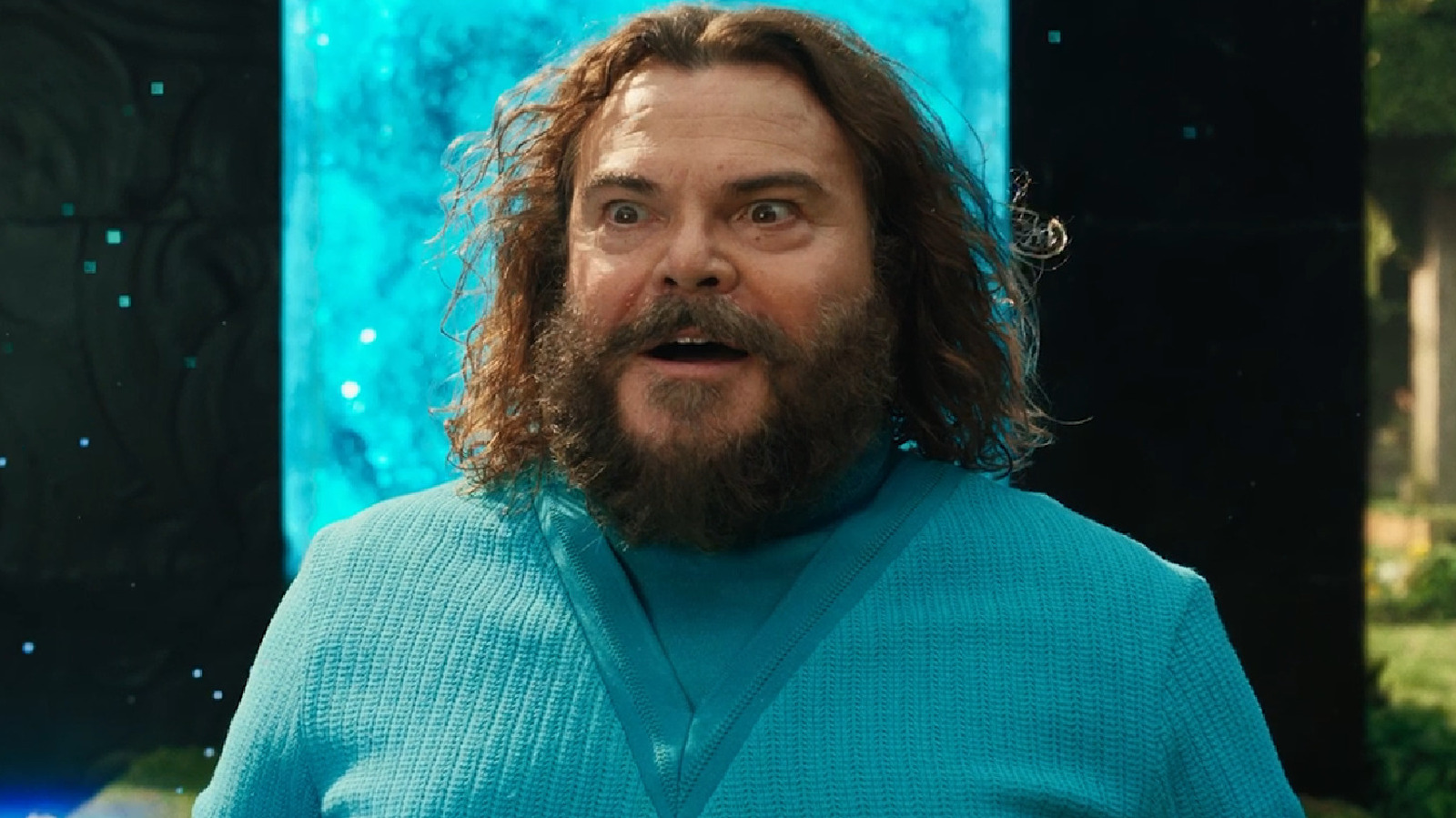
Experiencing a movie at the cinema can be thrilling due to the collective excitement from fellow viewers. They chuckle at humorous scenes, gasp during suspenseful moments, and cheer for impressive sequences. At times, this enthusiasm escalates, whether they’re deeply invested in the films or strongly dislike them, causing standard theater decorum to take a backseat. Occasionally, these spontaneous cinema outbursts become internet sensations or accepted deviations from the usual. However, there are instances when things get perilous, with movies serving as a cover for acts of aggression.
Let’s explore some unforgettable movie screenings in history that either excited or dismayed audiences to extremes. From today’s Gen Alpha meme events that have been a source of frustration for theater staff, to the very first moving images which may have made your ancestors flee in terror, these incidents showcase the power movies can have on an audience.
A Minecraft Movie
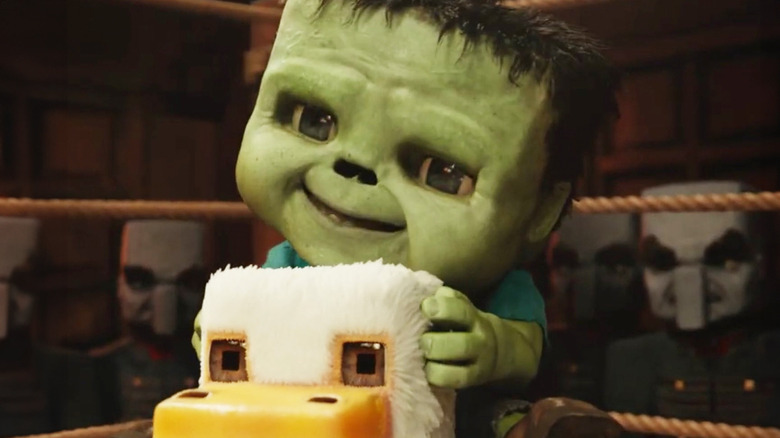
Even if you haven’t watched “A Minecraft Movie,” chances are you’ve come across numerous clips online of young cinema-goers going hysterical during the scene where character Steve, played by Jack Black, exclaims “Chicken jockey!” to describe a baby zombie riding a chicken. The fact that so many people are capturing these in-theater reactions defies theater etiquette, and things become even more peculiar as some of the over-the-top responses from “Minecraft” enthusiasts featured in those clips demonstrate.
During the “chicken jockey” scene, it’s often seen that spectators toss popcorn at the screen. However, law enforcement has been summoned on occasions to remove overly boisterous kids from the premises. Moreover, an unusual incident took place in Provo, Utah, where someone smuggled a live chicken into a screening. On a different note, in Warwick, Rhode Island, it’s reported that four teenagers threatened adults who asked them to quiet down with knives.
Apart from a single exception, director Jared Hess has generally found the non-criminal responses to “chicken jockey” amusing. Jack Black warned audiences during one screening not to throw popcorn, and cinemas have issued similar warnings before screenings as well. Regal Cinemas held special “Chicken Joker” screenings in their 4DX theaters on April 20, possibly with the intention of keeping any potential chaos confined to specific showtimes if it cannot be prevented altogether.
Wicked
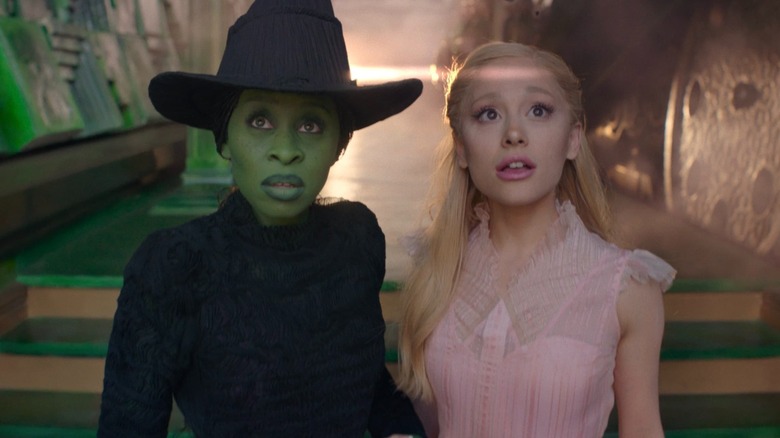
Advanced sing-along showings for musicals like “Wicked (Part 1)”, scheduled for Christmas 2024, have been common practice for quite some time. These events are either for re-releases of timeless classics or to boost the final box office earnings of movies nearing the end of their theater runs. However, before these special showings took place, it turned out that many regular screenings spontaneously transformed into informal sing-alongs.
It wasn’t an enjoyable experience for those eager to listen to Cynthia Erivo and Arianna Grande’s stunning voices amidst a crowd of poor karaoke performances, as AMC Theatres prohibited singing at standard “Wicked” showings. Dwayne Johnson, however, stood up for the singing audience members, expressing hope that they’d also join in during “Moana 2” – though it’s unlikely given that the songs from “Moana 2” aren’t particularly memorable.
The movie “Wicked” has stirred up some debate due to the practice of capturing and sharing scenes from the film on social media. This behavior not only breaches federal anti-piracy laws and theater regulations, but research indicates that approximately 20% of today’s teenagers are now using their phones during movie screenings.
Minions: The Rise of Gru
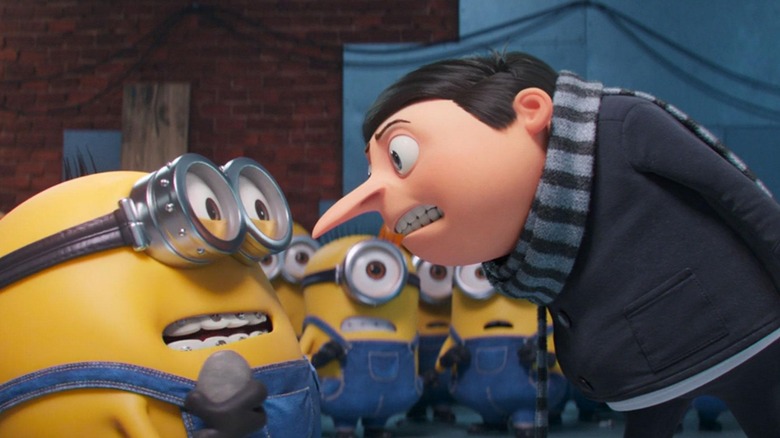
In 2022, when it was released, “Minions: The Rise of Gru” broke box office records, and a big part of that success can be attributed to unexpectedly high ticket sales from teenagers who are fond of memes. While Minion memes used to primarily circulate among Boomers on Facebook, it was the younger generation (Zoomers) who started the trend of going to the movies dressed in formal attire, known as “Gentleminions,” to ironically appreciate the latest Illumination animation.
If “Gentleminions” were merely a humorous fashion fad, it would have been amusing, and Universal Studios certainly appreciated the additional income it generated. Regrettably, some screenings of “Gentleminions” served as a prelude to the problematic audience behavior that escalated into incidents like “chicken jockey” in the future. TikTok videos depicted movie theaters transforming into mosh pits, and there were reports of property damage. Families who attended the screenings felt disturbed by the rowdy teenage behavior. In response, several cinemas in the U.K. took preventative measures by prohibiting unaccompanied youth from wearing suits to attend screenings.
RRR
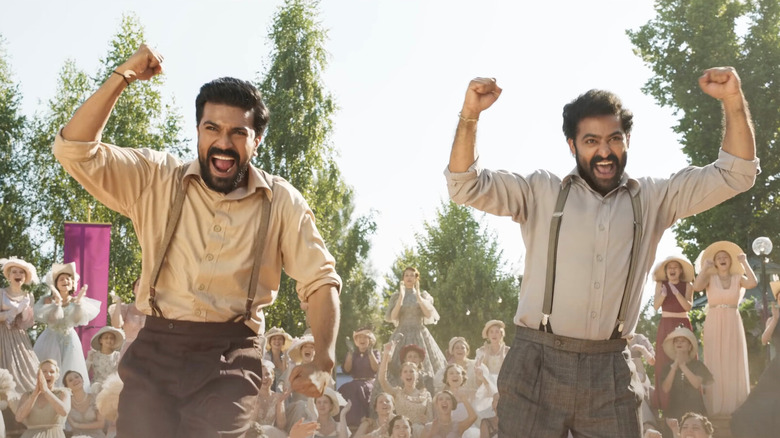
In discussions about what’s acceptable in audience conduct at theaters, one perspective that advocates for less stringent rules points to variations in cultural norms globally. For instance, Indian cinemas are more lenient towards viewers chatting, texting, or engaging in various activities during a movie. This lax attitude was showcased worldwide with the global release of “RRR,” offering a vibrant example of the boisterous Indian cinema-going experience.
Audience members became quite animated during the screenings of “RRR”, as the intense, larger-than-life action scenes captivated them deeply. Throughout the three-hour duration of the film, the crowd could frequently be heard cheering in enthusiasm. The Oscar-winning musical number “Naatu Naatu” further ignited excitement, leading many to host spontaneous dance parties within the theater. Even in typically quiet movie-watching cultures like Japan, fans of “RRR” participated in boisterous screenings, dressing up as characters, vocally engaging with the on-screen action, and joining in the soundtrack with various musical instruments such as tambourines and noisemakers.
The Room
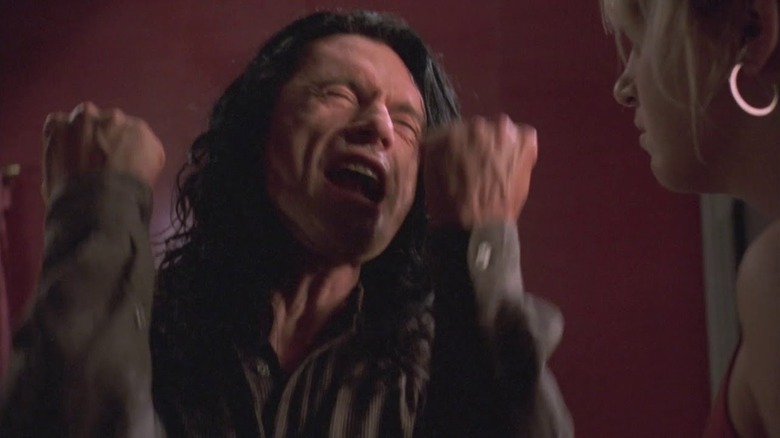
Instead of having a typical cinematic debut, “The Room” didn’t follow the standard route for theatrical releases. The film, created by the multi-talented Tommy Wiseau who served as writer, director, producer, and actor, was self-distributed to a handful of theaters in Los Angeles back in 2003. He marketed it with an eerie billboard and campaigned for Oscar recognition. In theatres where “The Room” played to mostly empty seats, those who attended felt free to mock the film much like on “Mystery Science Theater 3000.” As these people started inviting their friends to watch the movie, a unique cult following was formed.
The Room,” initially, has established itself as a staple in the late-night film scene, gaining traction through notable admirers, online critiques, occasional airings on Adult Swim during April Fools’ Day, and Greg Sestero’s memoir “The Disaster Artist” (co-written by Tom Bissell and later turned into a 2017 movie of the same name), all contributing to its widespread popularity. At these special screenings held at midnight, disorder is not merely tolerated but actively embraced. Audience members not only provide humorous commentary to mock the film’s numerous imperfections, but they also engage in playful activities like tossing footballs during scenes where Johnny (Wiseau) does the same with his companions and chucking spoons whenever the puzzling framed picture of a spoon appears on screen.
The Last Temptation of Christ
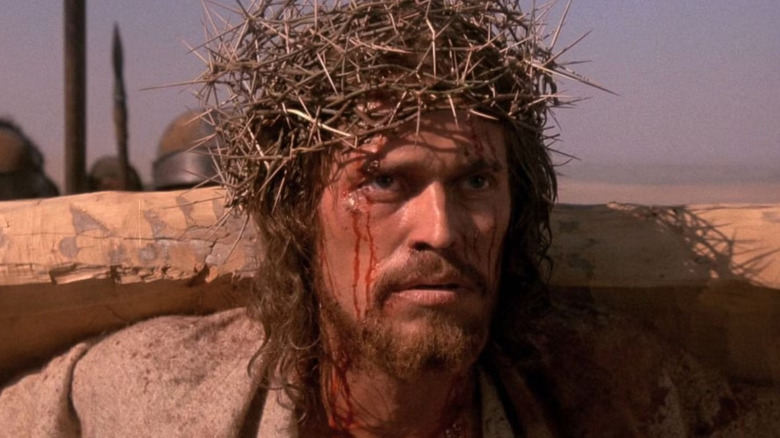
As a fervent admirer of cinematic art, I’ve noticed that protests against provocative films often stir up more turmoil outside the movie theaters than within them. The reason being, those who choose to boycott a film aren’t purchasing tickets. Yet, the controversy surrounding Martin Scorsese’s “The Last Temptation of Christ” was an exception to this rule. This film sparked outrage due to a scene where Jesus Christ (Willem Dafoe) experiences a Satanically-induced vision of starting a family with Mary Magdalene (Barbara Hershey). In France, these protests weren’t confined to pickets and ticket boycotts. Instead, they escalated into violent confrontations, with screenings disrupted by assaults, tear gas, stink bombs, and even a major arson attack in some theaters.
On October 22, 1988, extremist religious groups affiliated with the far-right set fire to the Saint-Michel cinema, which was screening a movie deemed blasphemous. The attack left thirteen individuals injured, and the cinema remained closed for repairs over the subsequent three years. Jean-Marie Cardinal Lustiger, the Archbishop of Paris, had previously criticized the film without having seen it. However, he also denounced the violent actions of the protesters, stating that they were not acting as followers of Christ but rather as adversaries of Him (as reported by The New York Times).
The Warriors
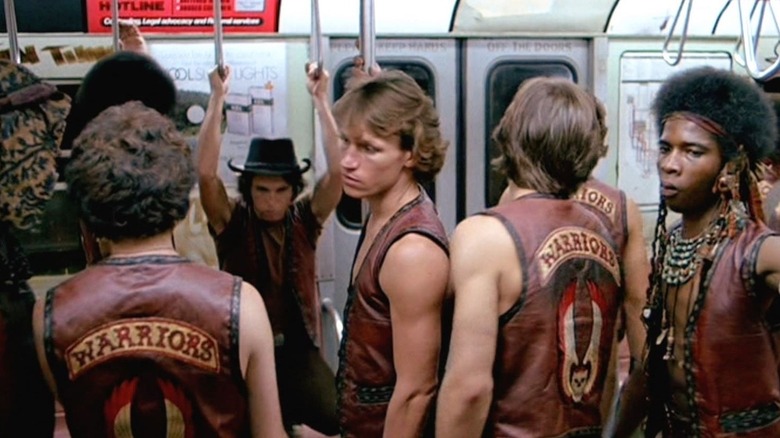
In 1979, the gritty gang war thriller “The Warriors” was initially met with genuine fear among viewers due to its striking resemblance to real-life incidents of gang violence that took place in cinemas showing the movie. Tragic events such as two murders in California and one in Boston immediately following screenings led Paramount Pictures to momentarily pause their promotional efforts for the film. In response, they even offered to cover additional security costs at any theater requesting it.
35 years after its release, I, as the director, recall the film sparking a wave of unrest. Speaking with Esquire, I shared that the movie’s popularity among street gangs, particularly young men, was likely the root cause. Many of these individuals had longstanding grudges, and when they all gathered in cinemas to watch the movie, tensions escalated. The guys they didn’t like were sitting right across the aisle, which undoubtedly added fuel to the fire. While I admit that the film’s spirited atmosphere might have amplified emotions, it was primarily the audience’s volatile nature that led to the outbreak of violence, not the movie itself, which wasn’t particularly violent in content.
The Rocky Horror Picture Show
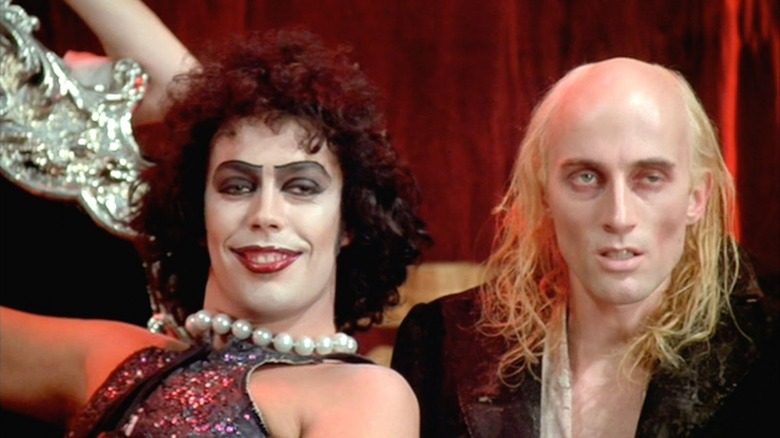
In its first release in 1975, “The Rocky Horror Picture Show,” known as the champion of late-night cinema eccentricity, failed to impress audiences. However, it has managed to maintain its presence in major cities and college towns even today due to the devoted fanbase who transformed midnight screenings into unforgettable spectacles. These showings often book up for Halloween and Pride Month specifically. To fully appreciate “The Rocky Horror Picture Show,” one must experience its madcap theatrical performance, as this live event is what truly solidifies it as a timeless classic.
During performances of “The Rocky Horror Show”, newcomers (those who haven’t watched the movie) are subjected to certain rituals before the film commences. The quiet moments in this campy musical are often filled with the audience shouting responses at the screen, while live performers, known as shadow-casts, mimic the actions of the on-screen actors. Traditional activities include bringing specific props and tossing them at the screen at certain instances, similar to a “chicken jockey” – rice during the wedding scene, toast when Dr. Frank-N-Furter (Tim Curry) says “A toast,” and playing cards during the lyrics “Cards for sorrow, cards for pain,” among others. Cross-dressing costumes and open expressions of sexuality are welcomed and celebrated – the fandom of “The Rocky Horror Show” has historically offered a supportive environment for the LGBTQ+ community.
The Exorcist
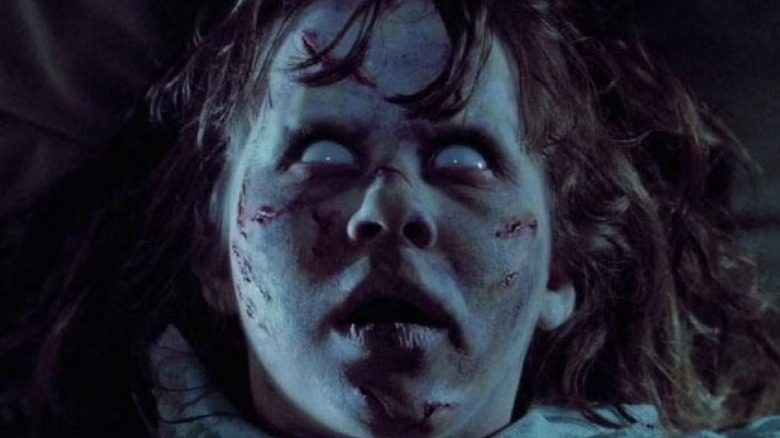
The intensity of this horror movie is so extreme that viewers have been known to feel physically ill as a result! From the gruesome scenes in “Terrifier” causing some audience members to vomit, to mass fainting incidents during the arthouse body horror film “Titane”, and even walkouts due to stress at the seemingly mild ghost story “Presence”, it’s clear that such reactions are common. However, for this discussion, we will zero in on the trailblazer of this phenomenon: “The Exorcist.
In simpler terms, people’s reactions to William Friedkin’s 1973 horror movie were so intense that they were extreme, ranging from fear and disgust to physical symptoms like screaming, fainting, vomiting, and even seizures. Some audience members fainted before the film even began, others needed to be carried out on stretchers during the screening, and there was even a report of a woman having a miscarriage. The film was so impactful that psychologists started discussing a condition they called “cinematic neurosis” caused by this movie.
Despite, or perhaps because of, all these factors, there was an overwhelming desire for people to watch “The Exorcist.” At times, queues outside cinemas came close to erupting into riots as fans clamored to get in. In his book “Laughing Screaming: Modern Hollywood Horror and Comedy,” historian William Paul noted that “The Exorcist” was a film that drew an unusually large amount of discussion about the audience itself.
King Creole
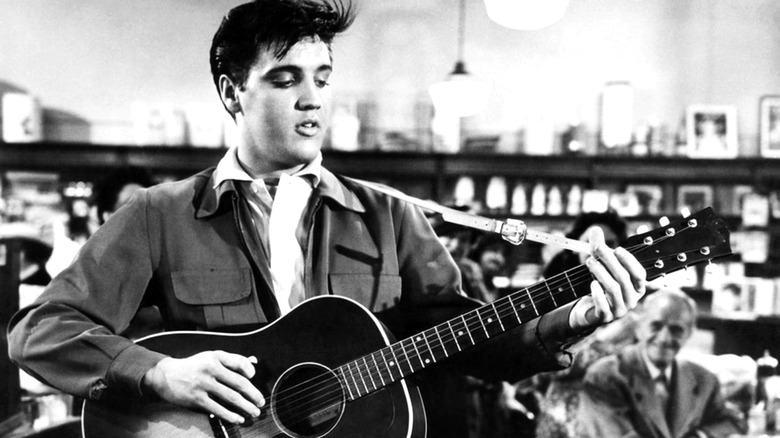
At the 1959 Mexico City premiere of the film “King Creole,” which was Elvis Presley’s fourth starring role and considered his best movie by Looper, Elvis himself wasn’t present. However, the chaos that ensued during the screening could easily have been mistaken for a scene at one of his concerts. Newspapers reported over 600 teenagers storming into the Américas Cinema without paying, and accounts of vandalism, lewd behavior, and police intervention followed.
During that period, strong dislike towards Elvis Presley was prevalent in Mexico. Newspaper writer Federico de León claimed that Elvis made disparaging remarks about Mexico; however, it has since been suggested that these comments were falsified to retaliate against Elvis for turning down a performance invitation from a Mexican politician. There have been allegations that Presley’s dance style was considered effeminate in Mexico and he was often accused of being homosexual. The film “Fun in Acapulco,” released in 1963, featuring Elvis, was actually shot in Los Angeles, leading some to believe that Elvis was barred from entering Mexico due to a riot. However, it was Elvis’s restricted travel outside the United States, due to Colonel Tom Parker lacking a passport, rather than a ban from Mexico.
L’Age d’Or
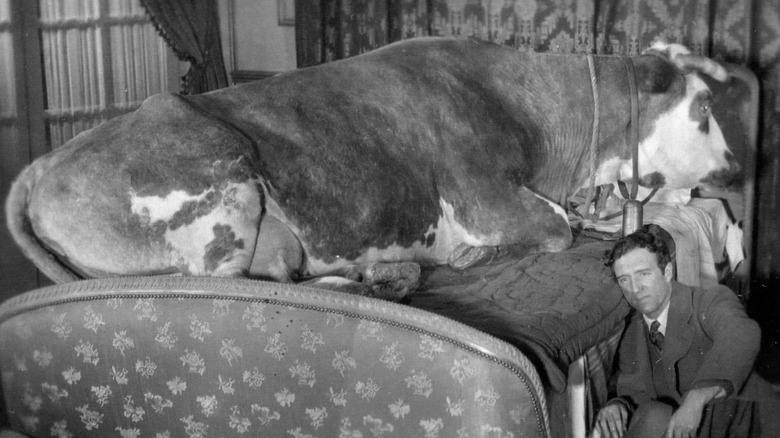
As a birthday present for the wife of wealthy arts patron Vicomte de Noailles, “L’Age d’Or” was the second joint project between director Luis Buñuel and surrealist artist Salvador Dali. Baffled by the unexpected success of their disturbing short film “Un Chien Andalou” among the upper class, Buñuel and Dali aimed to create an even more provocative and shocking second film. They might have excelled too well in this endeavor as “L’Age d’Or” was prohibited for 49 years.
Following a disturbance at Studio 28 theater on December 3, 1930, during a movie showing, this censorship occurred. The film’s explicit sexual content and criticism of Christianity sparked outrage among extremist groups like the League of Patriots and the Anti-Semitic League. In retaliation, they hurled ink at the screen, sprayed stink bombs at the audience, and vandalized surrealist artwork in the lobby. The police seized the film prints, and it wasn’t until 1979, when the Roxie Theater in San Francisco showed it, that “L’Age d’Or” was screened legally again.
The Birth of a Nation
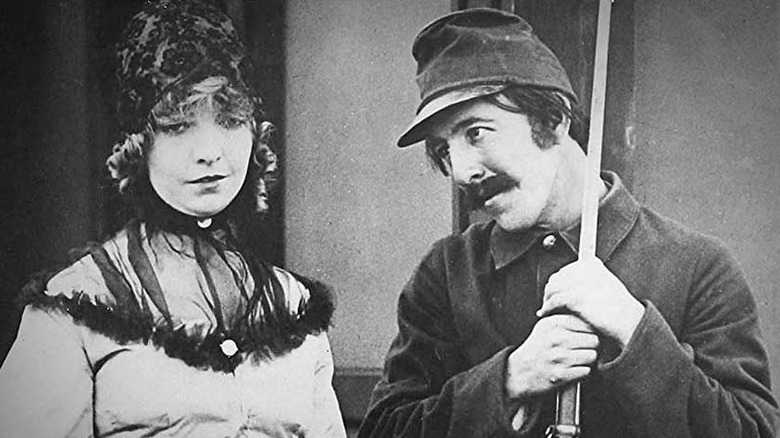
1915’s “The Birth of a Nation,” directed by D.W. Griffith, was the most financially successful silent film, but it was also alarmingly racist for its period. The movie fueled the resurrection of the Ku Klux Klan and escalated hate crimes against Black people. Due to its offensive content, it’s challenging to find suitable images from the film for public viewing – it’s that problematic. Predictably, feelings about the movie were intense, and both supporters and critics had passionate responses during its initial release.
In Spartanburg, South Carolina, one man allegedly felt so strongly about the movie “The Birth of a Nation” that he drew his weapon within the theater and fired shots at the screen, hoping to protect Flora Cameron (played by Mae Marsh). Meanwhile, in New York City’s Liberty Theater, anti-racist demonstrators disrupted the screening by hurling eggs at the screen and delivering speeches criticizing the film for its offensive portrayal of African Americans. They emphasized that showcasing such a movie on the anniversary of Abraham Lincoln’s assassination was particularly inappropriate.
L’arrivée d’un train en gare de La Ciotat
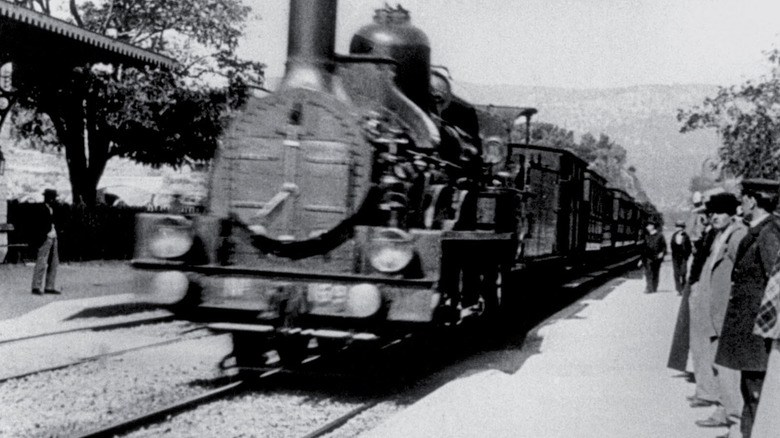
1896 saw the introduction of Auguste and Louis Lumière’s brief film “The Arrival of a Train at La Ciotat Station,” often titled differently in English versions. This 50-second short was said to have caused quite a stir among its earliest viewers, who reportedly thought that the oncoming train was genuine and might run them over. However, whether this panic was an actual occurrence or merely a tale is still up for discussion.
The tale could be interpreted as a symbolic depiction of the new art form’s potency, or, more skeptically, stemming from elitist humor that eventually gained traction. If the movie indeed scared viewers, it might have been due to the sensitivity surrounding a recent train disaster rather than confusing 2D illustrations with reality.
Despite questions about its historical accuracy, this legend has persisted in film history education and popular cultural consciousness. Notably, Martin Scorsese attempted to replicate this effect in 3D for his 2011 film “Hugo.
Read More
- CRK Boss Rush guide – Best cookies for each stage of the event
- Glenn Greenwald Sex Tape Leak: Journalist Cites “Maliciously Political” Motives
- Fortress Saga tier list – Ranking every hero
- Mini Heroes Magic Throne tier list
- Castle Duels tier list – Best Legendary and Epic cards
- Grimguard Tactics tier list – Ranking the main classes
- How to Prepare and Dominate the Awakened Hollyberry Cookie Update
- Seven Deadly Sins Idle tier list and a reroll guide
- Overwatch Stadium Tier List: All Heroes Ranked
- Cookie Run Kingdom Town Square Vault password
2025-05-05 17:32